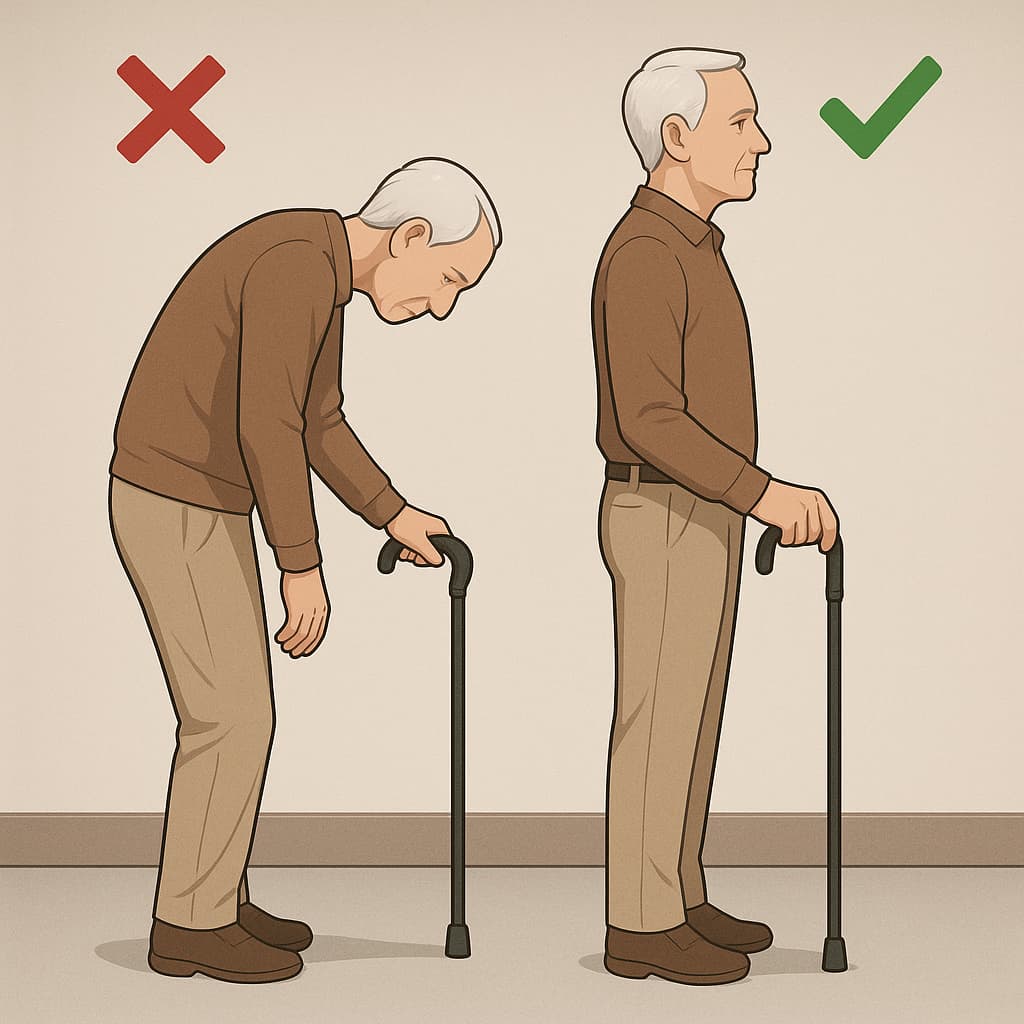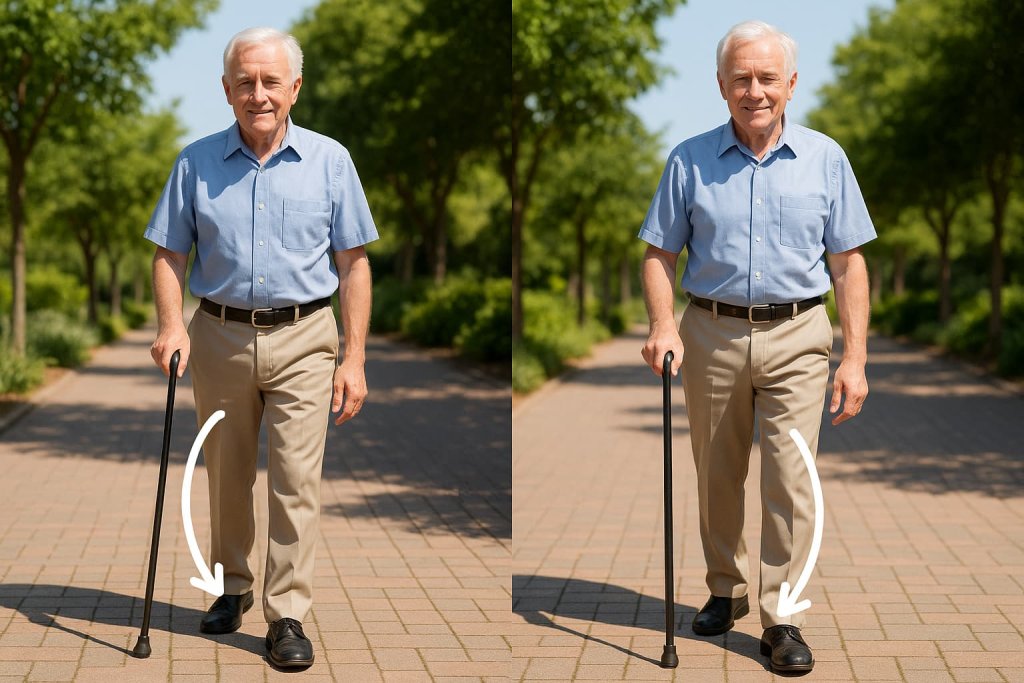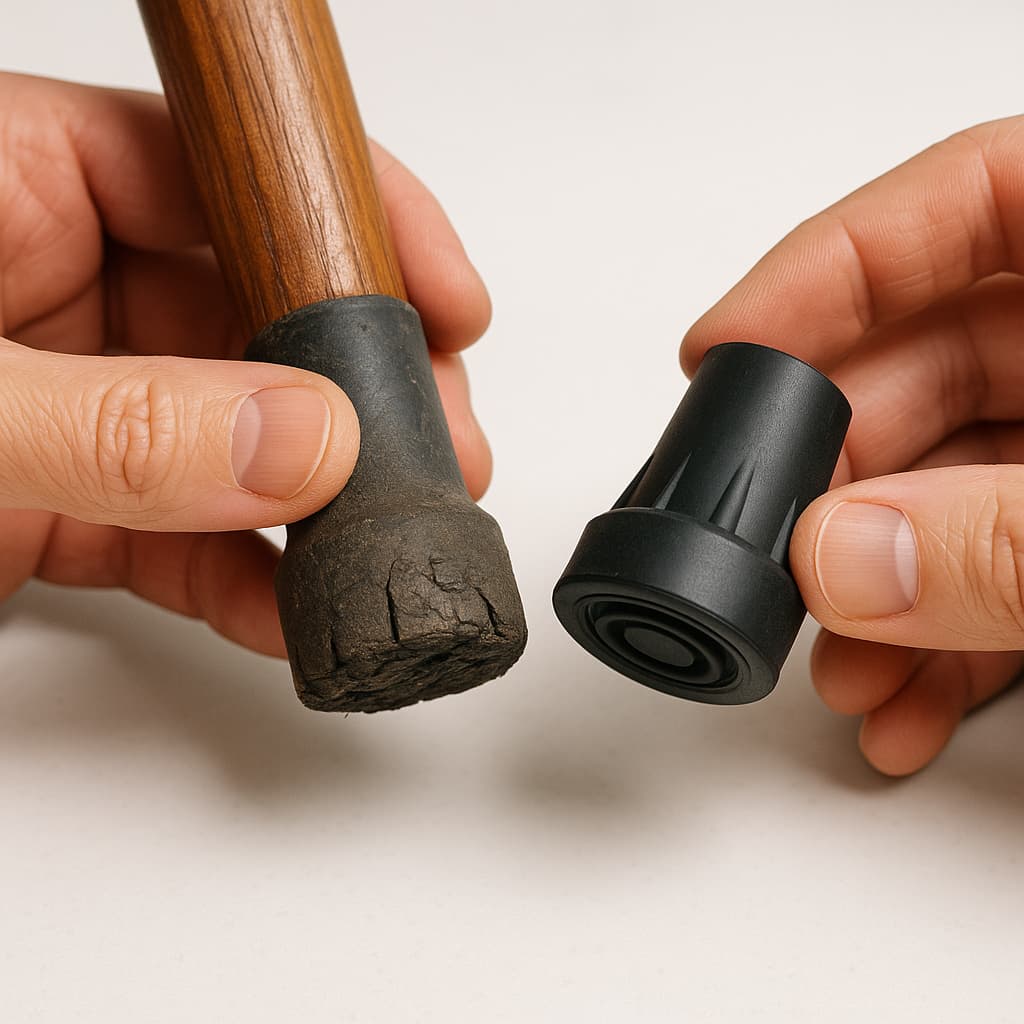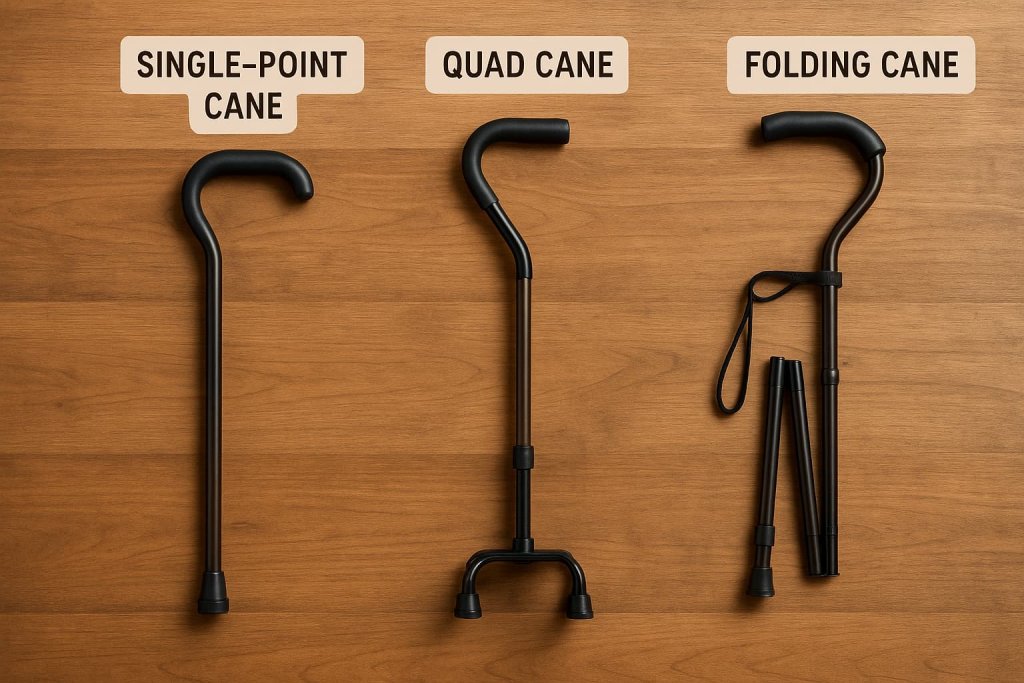Knowing how to walk with a cane the right way can prevent pain, improve your balance, and reduce the risk of falls. Many people think using a cane is simple—just hold it and walk—but small mistakes can make it less effective and even dangerous.

From holding it on the wrong side to choosing the wrong height, common walking cane mistakes can cause poor posture, uneven weight distribution, and unnecessary strain on your joints. By learning the correct techniques, you can walk more comfortably, maintain independence, and protect your body from injury.
- The most common cane mistakes people make
- Step-by-step instructions for correct cane walking
- Stair safety tips
- How to choose the right cane and keep it in top condition
Tips and Tricks for Walking with a Cane
- Practice indoors first — Get comfortable moving with your cane in a safe, flat space before going outdoors.
- Wear supportive shoes — Avoid slippery soles; shoes with good grip improve stability.
- Mind your posture — Keep your head up and shoulders relaxed; don’t stare at the ground.
- Use rails when available — On stairs or slopes, hold your cane in one hand and a rail/wall with the other.
- Scan your path — Watch for curbs, steps, or wet surfaces where cane tips may slip.
- Replace tips regularly — A fresh rubber tip (ferrule) grips better and reduces falls.
- Take your time — Short, steady steps beat rushing, especially on unfamiliar terrain.
7 Mistakes You Must Avoid
1) Holding the Cane on the Wrong Side

Mistake:
Holding the cane on the same side as your injured or weaker leg.
Why it’s a problem:
This increases pressure on the weaker leg and throws off your natural walking rhythm.
Correct Way:
Hold the cane in the hand opposite your weaker leg.
Example: If your right leg is weak, hold the cane in your left hand.
Source: Verywell Health – Which Hand Should I Hold a Cane In?
2) Using the Wrong Cane Height

Mistake:
A cane that’s too tall or too short forces you to lean or hunch, causing poor posture and strain in your shoulders, neck, and back.
Correct Way:
- Stand with shoes on and arms relaxed at your sides.
- The handle should align with the crease of your wrist.
- Your elbow should be slightly bent—around 15–20°—when holding the cane.
- If you need to lean forward or raise your shoulder to use it, adjust the height.
Source: Mayo Clinic – Canes: Tips for Choosing and Using
3) Poor Walking Coordination

Mistake: Moving the cane out of sync, placing it too far ahead, or dragging it behind.
Correct way: Step forward with your weaker leg and cane together. Place the cane only a small step (about 6–8 inches) ahead, then bring the stronger leg forward.
Tip: Practice near a counter or wall until the rhythm feels natural.
Source: Cleveland Clinic – How to Use a Cane
4) Rushing or Overstepping
Mistake:
Taking big, fast steps or swinging the cane too far ahead reduces stability and control. Overreaching shifts your weight forward, increases fall risk, and can strain your shoulders, elbows, and wrists.
Why it’s a problem:
- Less balance support when the cane is too far ahead
- Higher chance of tripping or slipping
- Extra strain on upper joints
- Disrupted walking rhythm
Correct Way:
- Use short, controlled steps—place the cane only 6–8 inches ahead.
- Move the cane and weaker leg together, then step with the stronger leg.
- Keep a steady, comfortable pace.
- On slippery or uneven surfaces, keep the cane tip closer to your body for better support.
Pro Tip:
Practice slow walking indoors, focusing on keeping the cane close and matching its movement with your weaker leg.
Source: StepWise Cane – Common Mistakes to Avoid
5) Neglecting Cane Maintenance

Mistake: Worn-out rubber tips or loose handles.
Correct way: Inspect the rubber tip (ferrule) regularly; replace if worn/cracked. Ensure the handle is tight and the shaft undamaged. Consider high-traction tips for wet or icy surfaces.
Source: Chipperfield Physio – Common Walking Cane Mistakes
6) Skipping Professional Guidance
Mistake: Using a cane without training.
Correct way: A physical therapist can help pick the right cane, set the height, teach safe technique, and assess posture and weight distribution.
Source: Verywell Health – How to Walk with a Cane
7) Not Knowing Stair Safety Rules
Remember: “Up with the good, down with the bad.”
- Going up: Step up with your strong leg first, then bring the cane and weaker leg up together.
- Going down: Place the cane on the lower step first, then your weaker leg, followed by your strong leg.
Source: Verywell Health – Cane on Stairs
Quick Reference Table: Mistakes vs. Correct Practice
| Mistake | Why It’s a Problem | Correct Practice |
|---|---|---|
| Holding cane on wrong side | More pressure on weak side; poor balance | Hold cane opposite the weaker leg |
| Wrong cane height | Poor posture; shoulder/back pain | Handle at wrist crease; 15–20° elbow bend |
| Poor coordination | Disrupted gait; less stability | Move cane & weak leg together; short placement |
| Rushing or big steps | Higher fall risk | Short, steady steps; controlled pace |
| Neglecting maintenance | Less traction; sudden instability | Replace worn tips; tighten handle; inspect shaft |
| No professional guidance | Incorrect technique; potential injury | Consult a physical therapist |
| Unsafe on stairs | Trip/fall hazard | “Up with good, down with bad” rule |
Choosing the Right Cane

- Single-point cane: Best for mild balance issues and everyday mobility.
- Quad cane: Wider base for significant weakness or when extra stability is needed.
- Folding cane: Convenient for travel or occasional use.
Tip: Pick an ergonomic handle to reduce hand fatigue during longer walks.
Conclusion
Walking with a cane is about using it as an extension of your body to improve safety, reduce pain, and move with confidence. By avoiding the mistakes above, applying the tips and tricks, and practicing proper technique, you’ll protect your joints, improve posture, and maintain independence.
Next step: If you’re unsure about your cane’s fit or technique, book a session with a physical therapist—small adjustments can make a big difference.
